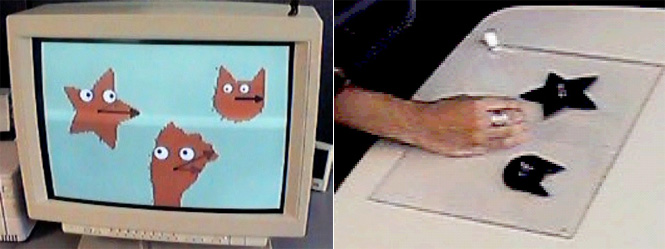Printed from www.flong.com
Contents © 2020 Golan Levin and Collaborators
Golan Levin and Collaborators
Projects
Sort by : Author | Date | Name | Type
- Installations
- Ghost Pole Propagator II
- Augmented Hand Series
- Eyeshine
- Re:FACE, Anchorage Version
- Merce's Isosurface
- Double-Taker (Snout)
- Opto-Isolator
- Eyecode
- Interstitial Fragment Processor
- Reface [Portrait Sequencer]
- Ghost Pole Propagator
- Footfalls
- Scrapple (Installation)
- The Manual Input Workstation
- Interactive Bar Tables
- Messa di Voce (Installation)
- Hidden Worlds of Noise and Voice
- Re:MARK
- Introspection Machine
- Audiovisual Environment Suite
- Dakadaka
- Rouen Revisited
- Performances
- Ursonography
- Scrapple (Performance)
- The Manual Input Sessions
- Messa di Voce (Performance)
- Dialtones (A Telesymphony)
- Scribble
- Net.Artworks
- Terrapattern
- Moon Drawings
- Free Universal Construction Kit
- QR Codes for Digital Nomads
- The Dumpster
- Axis
- JJ (Empathic Network Visualization)
- The Secret Lives of Numbers
- Alphabet Synthesis Machine
- Obzok
- Sketches
- Stria
- Dendron
- Slamps
- Banded Clock
- Floccus
- Stripe
- Meshy
- Directrix
- Yellowtail
- Streamer
- Blebs
- Self-Adherence (for Written Images)
- Poster design for Maeda lecture
- The Role of Relative Velocity
- Segmentation and Symptom
- Floccular Portraits
- Curatorial
- Mobile Art && Code
- ART AND CODE
- Code, Form, Space
- IEEE InfoVis 2008 Art Exhibition
- Solo exhibition at bitforms gallery
- IEEE InfoVis 2007 Art Exhibition
- Signal Operators
- Commercial / Industrial
- Motion Traces [A1 Corridor]
- Civic Exchange Prototype
- Amore Pacific Display
- Interactive Logographs
- Interval Projects
- Media Streams Icons
- Miscellaneous
- NeoLucida
- Rectified Flowers
- GML Experiments
- New Year Cards
- Admitulator
- Glharf (or Glarf)
- Finger Spies
Rotuni
1997 | Golan Levin, Scott Snibbe and Marcos Vescovi

The Rotuni is a computer musical instrument, developed as an experimental prototype at Interval Research Corporation, with a colorful graphic display and a physical, camera-based input device. Users play the Rotuni by placing opaque shapes or other objects on a translucent table-like surface. Beneath this surface a digital video camera captures the silhouettes of the users’ objects; the pixel-outlines of the individual shapes or objects are then individually segmented and tracked by the computer. These silhouettes are reproduced on-screen (in real-time) but with the addition of a clock arm which originates at the centroid of each silhouette and extends to the silhouette’s edge, and which rotates in discrete time steps.
As the clock arm sweeps around the contour of the silhouette, a musical note is played whose pitch is proportional to the length of the clock arm at every time-step. The Rotuni (whose name is a combination of "rotating" and "tunes") is polyphonic, since each silhouette yields its own melody. Each silhouette, moreover, yields a melody which is unique to its form; users can modify a shape’s melody as it plays by changing the "footprint" of the object with the addition or motion of fingers and/or other small objects.
The Rotuni musical silhouettes are enlivened by the addition of eyes which float above each shape’s center of mass and "look at" the eyes of the other shapes. The size of the eyes are proportional to the area of the shape to which they belong.

